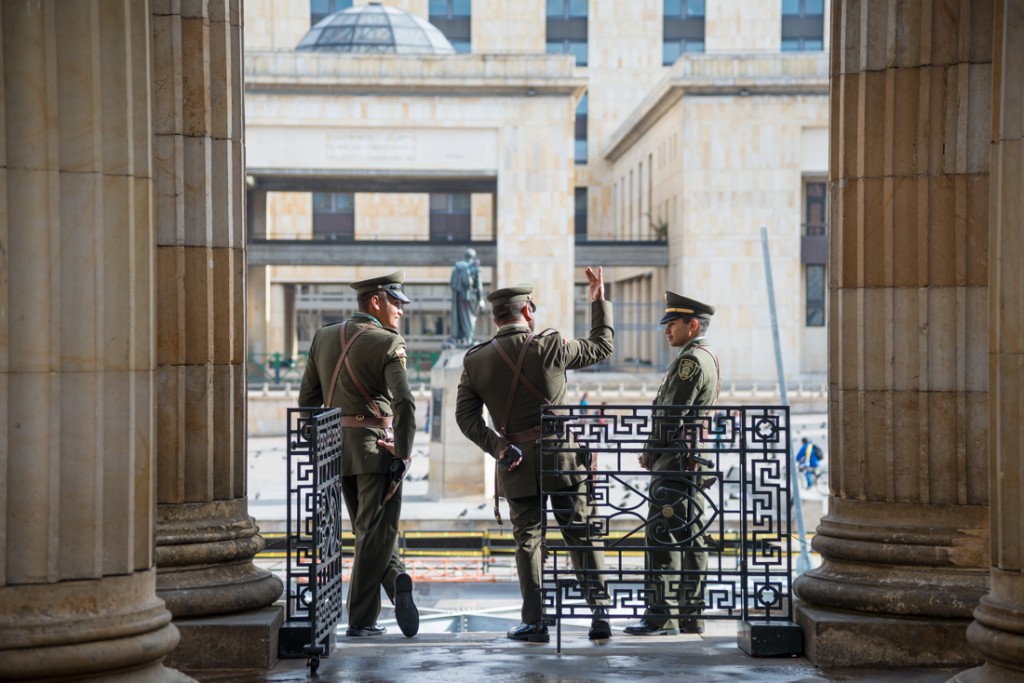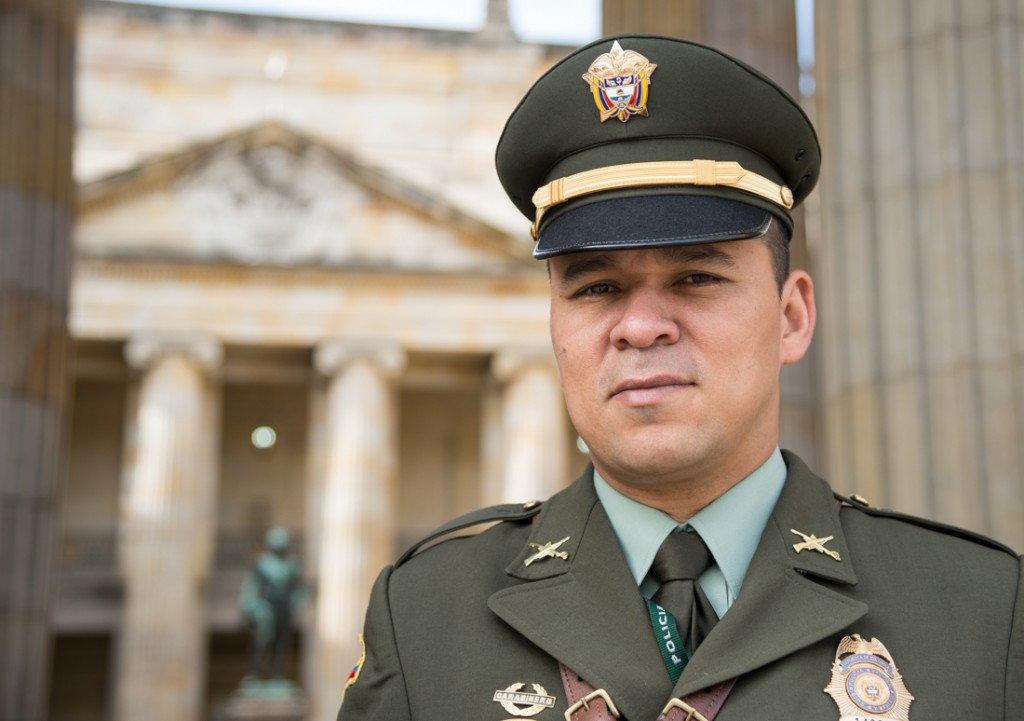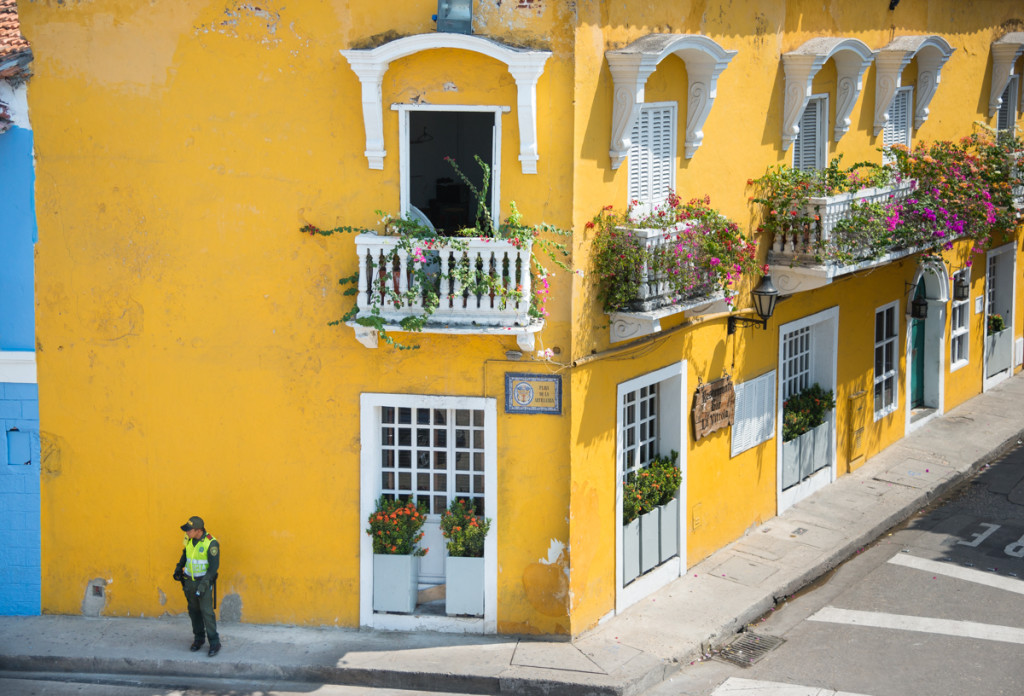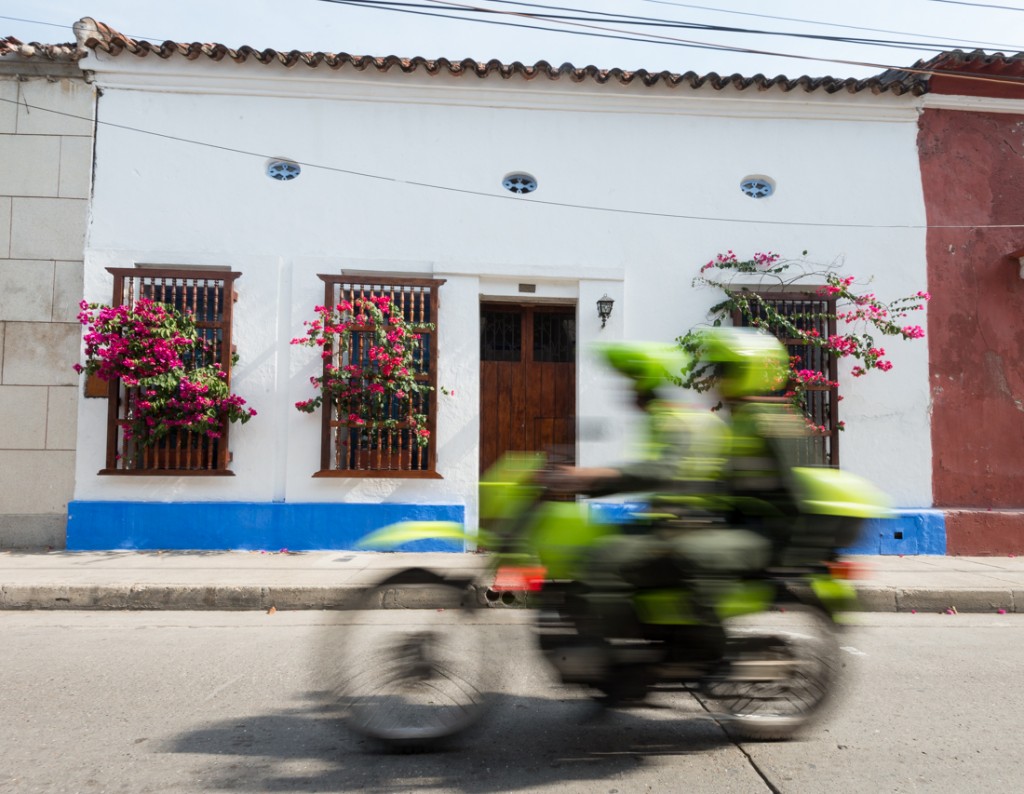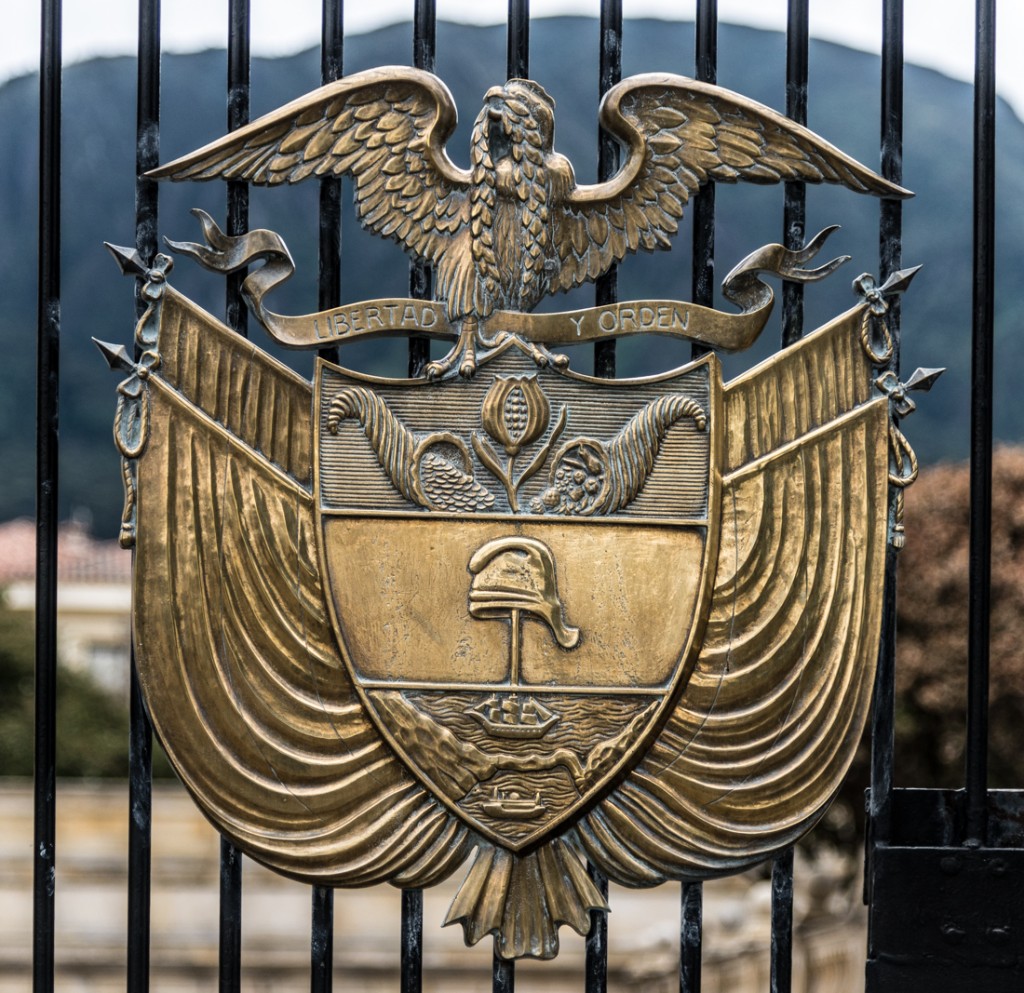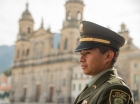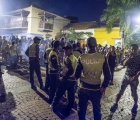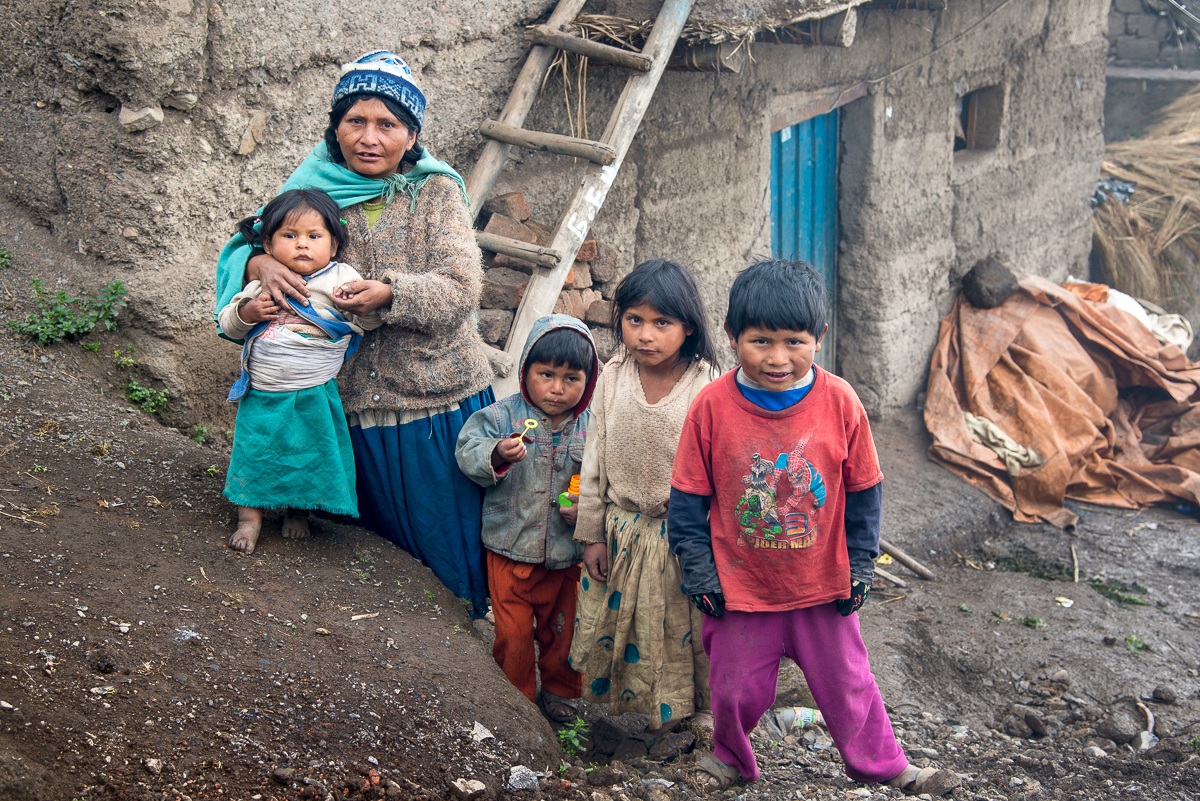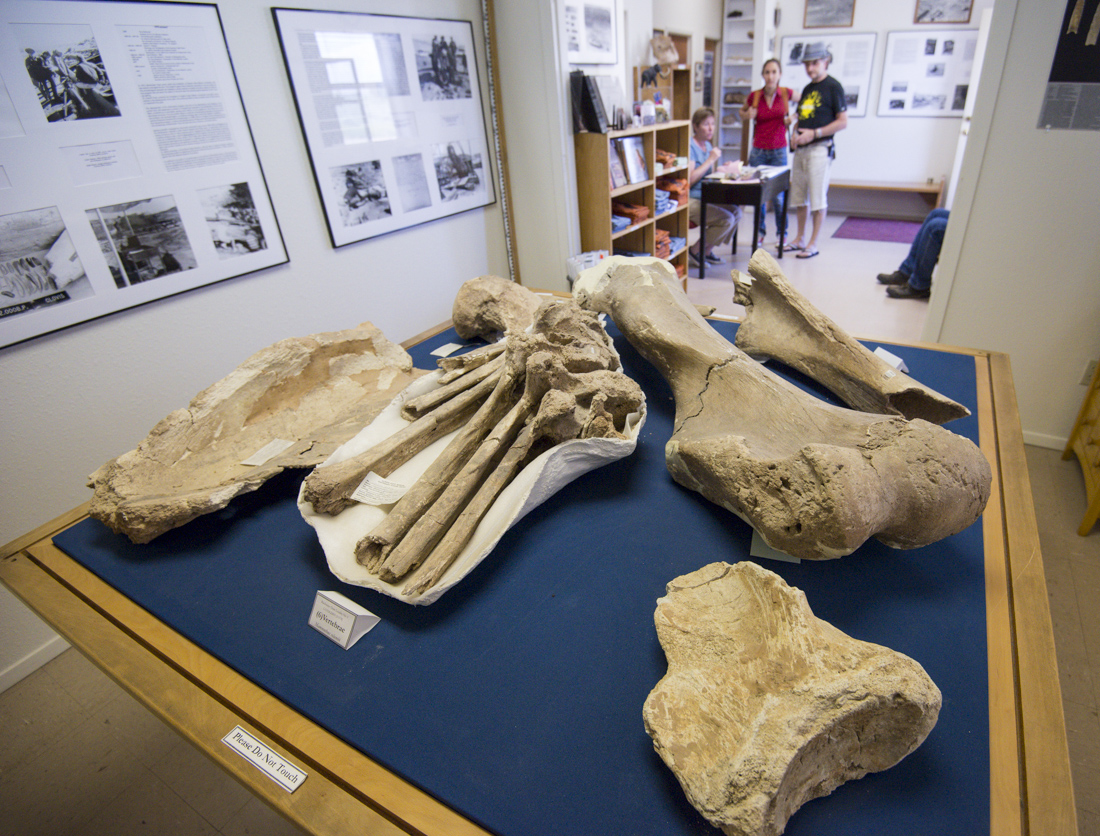Let’s start with the first thing that comes to every American’s mind when you mention the South American nation of Colombia.
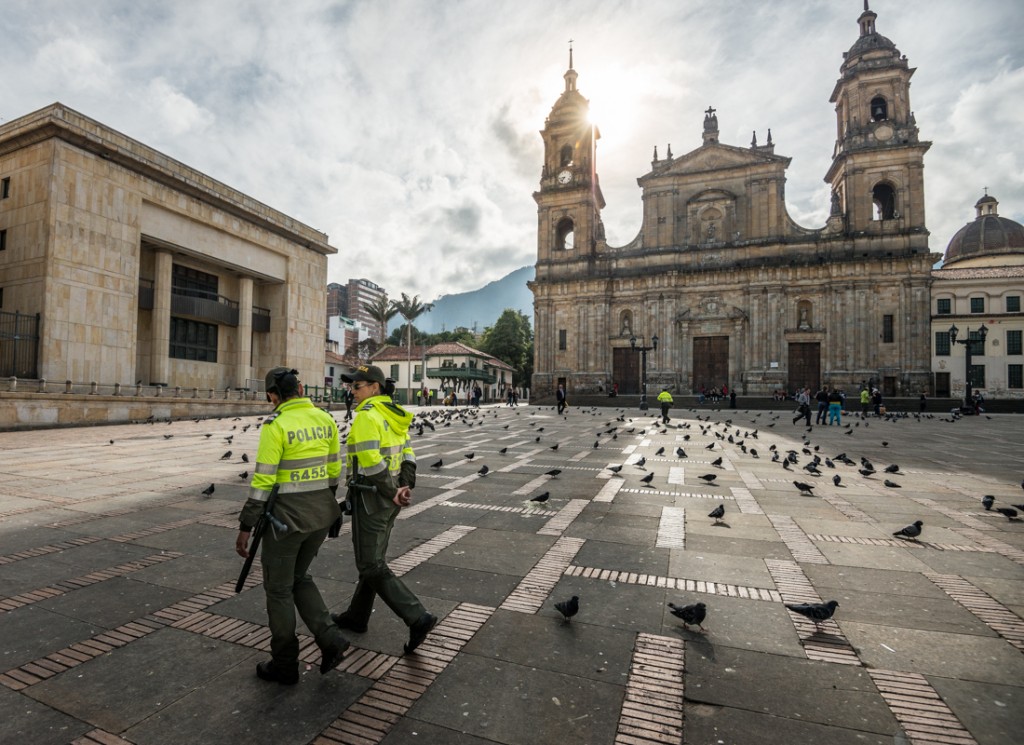
In the shadow of Colombia’s Catedral Primada, two Policia Nacional patrol Plaza de Bolivar, between the Colombian Congress and Supreme Court buildings in Bogota.
When I told people I was planning to spend a week or two driving around Colombia, virtually everyone expressed concern about my safety (and sanity). A beautiful tropical country, bisected by the northern Andes and boasting both Caribbean and Pacific coastlines, Colombia seems to be better known for drug cartels, guerilla warfare, and kidnappings. Colombia’s bad reputation was well deserved in the 1990s, but a “Colombian Miracle” has transformed it into a great destination – even if you don’t drink coffee.
Fifteen years ago, Colombia was embroiled in a four-way civil war: the players included communist guerilla groups like the “FARC;” right-wing paramilitary groups that sprung up to oppose the guerillas but took on a terrorist-like life of their own; powerful regional drug cartels (especially Cali and Medellin); and the struggling and outnumbered Colombian military itself. Drug trafficking and violence were the norm. Guerilla and paramilitary groups financed themselves with drugs and kidnapping, while the drug cartels amassed military-like troops and weapons to protect their turf. Colombia was the world’s biggest supplier of cocaine, and huge sections of the country’s roads and territory were out of the government’s control. Millions of Colombians were displaced from their homes. In 1999, the situation was so bad the Colombian government formally ceded vast territories to one of the guerilla groups.
But Colombia is in the midst of what some have called the Colombia Miracle, and what almost anyone would call an amazing turnaround. Starting in 1999 and accelerating with the 2002 election of a new get-tough president (Uribe), the Colombian government expanded its police and military forces. The U.S.A. provided money, personnel, weapons, and intelligence assistance. Colombia targeted the drug trade and the guerilla and paramilitary forces, assassinated and captured key leaders, and even had successful “peace talks” with some guerilla and paramilitary groups.
It’s working. The drug cartels have mostly fractured or disappeared. Most of the paramilitary groups have disbanded and disarmed, and the communist guerilla groups are greatly diminished and confined to areas near the Ecuador and Venezuelan borders. Even the guerilla FARC has very recently (just this month) reached a peace agreement with Colombia and claimed that it will stop military training and focus on peaceful means. Drug production is down significantly. In the cities, the police are everywhere and are highly visible (literally so, often in fluorescent yellow-green uniforms), and much of life is back to normal.
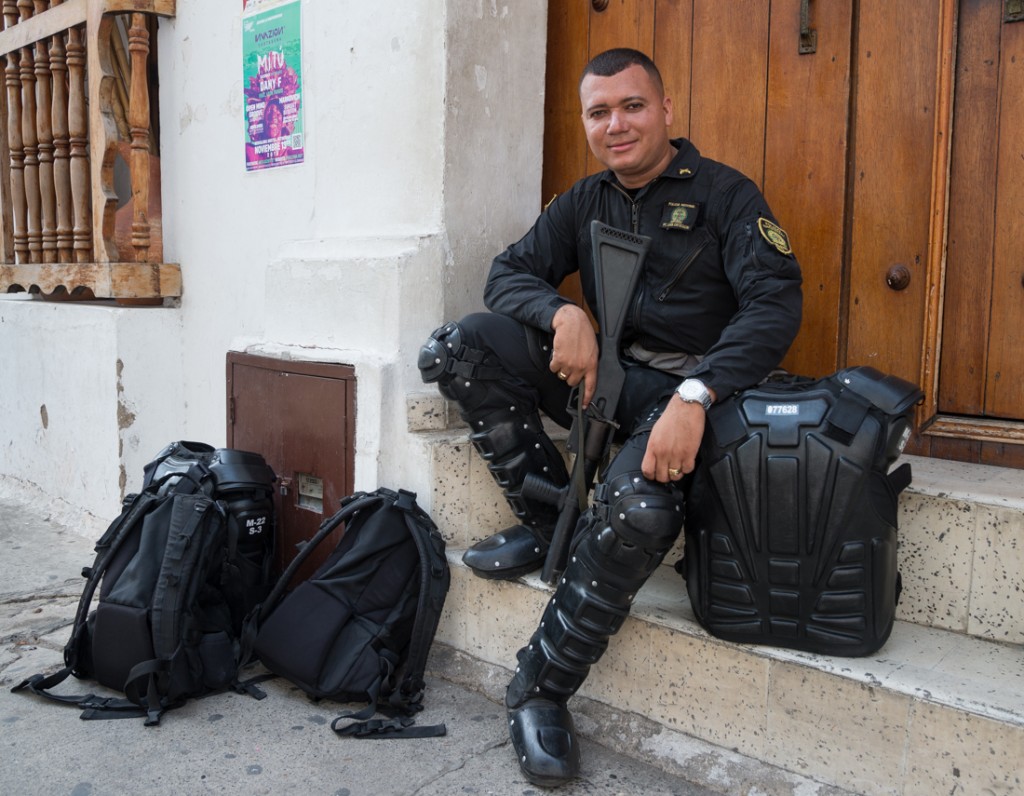
Riot police in Cartegena, Colombia. With these guys around, the risk of an actual riot seemed very low.
Meanwhile – and not coincidentally – the Colombian economy has boomed. Poverty and unemployment levels have plunged; GDP and incomes have soared. Colombia’s highways – though often small and very curvy through the mountains – are in amazingly good shape, thanks to a massive road-construction effort. A mixed blessing of that booming economy is that they’re packed with cargo trucks.
There may be lots of lessons – pro and con – in the Colombia story. The successful strategy had great emphasis on obtaining military and police control, modest efforts at negotiation, and little focus on direct assistance to the 6 million displaced refugee-like Colombians. But the plunge in poverty rates and violence, and rise in incomes may have helped more than direct assistance ever could. The government is reported to have used – unapologetically – some tactics that might make many Americans squeamish (though none worse than their foes were regularly employing). The United States’ financial and military involvement in Colombia’s recovery has been perhaps our most extensive and most successful nation-building exercise in recent history. It’s worth noting, though, that the still-problematic leftist FARC organization was in some ways Colombia’s version of Cuba’s Castro regime (with whom the U.S. is now thawing relations). It’s a complicated world.
The U.S. State Department still has an ominous-sounding travel advisory about Columbia, and did not seem to sanction my chosen itinerary. But I had a great trip through Colombia – even taking a rental car (with a fellow American buddy) through long sections of remote countryside (from Bogota to Pereira to Medellin and on some tiny side roads through the mountains) that were dangerous FARC and cartel territory not very long ago. The national tourism board uses a clever slogan that gives a nod to Colombia’s awkward history: “The only risk is wanting to stay.”
“Libertad y Orden” is Colombia’s official motto; it means “Freedom and Order” (that’s “order” as in “law and order,” presumably). A few years back, Colombians surrounded by a siege of civil and guerilla war had little of either. But in a country now seemingly blanketed with an intimidating but hopefully-benevolent police presence, there is surely much more “order,” and – judging from the bustling streets and highways and from the faces of the people we encountered – there’s apparently much more “libertad,” too.
